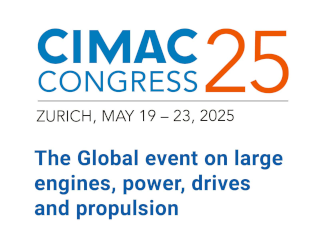Tsakos Energy Navigation (TEN) has generat[ds_preview]ed positive net income of 2.0 mill. $ in the third quarter of 2016 compared to a net income in the third quarter 2015 of 40.0 mill. $. After a challenging period from mid-second quarter, the company seeing a strong recovery in crude tanker rates in the fourth quarter of 2016 and beyond.
Revenues, net of voyage expenses (bunker, port expenses and commissions) for the same period were at 81.8 mill. $. TEN’s net income in the first nine months of 2016 was 43.8 mill. $ before taking into account 11.9 mill. $ in preferred stock dividends. Net income for the first nine months of 2015 was 118.6 mill. $. Net income in the third quarter 2015 was 40.0 mill. $. One year ago, revenues, net of voyage expenses (bunker, port expenses and commissions) in the customarily seasonally weak quarter, had totaled 109.9 million $.
Operating income for the first nine months of 2016 was 68.1 mill. $ and EBITDA 151.3 mill. $. The average daily time charter equivalent (TCE) rate (voyage revenue less voyage expenses) was 20,773 $ in the first nine months of 2016. Vessel operating expenses on a daily average per vessel basis for the nine months decreased nearly 3% to 7,840 $ from 8,077 $ in the 2015 equivalent period.
Depreciation and dry-docking amortization costs increased to 81.7 mill. $, in line with the growth in fleet size. General and administrative expenses totaled 19.0 mill. $. Interest and finance costs increased to 25.8 mill. $ from 21.5 mill. $ in the first nine months of 2015, due to increased loan expenses and interest on new debt related to the new vessels in the fleet. In the prior nine month period there was a gain on a loan repaid at a discount.
Interest and finance costs in the third quarter of 2016 were 9.8 mill. $. Loan and swap interest increased in line with the new loans obtained for the newbuilding program and associated new interest rate swaps. TEN’s balance sheet remained strong with cash balances at 229.1 mill. $ as of September 30, 2016. In addition, as of September 30, 2016, TEN has undrawn bank facilities totaling 391 mill. $, relating to ten vessels under construction, of which 150 mill. $ has since been drawn for the recent deliveries. Net debt to capital at September 30, 2016 was 49.1%. Earnings before interest, depreciation and amortization (EBITDA) in the third quarter of 2016 amounted to 40.5 mill. $.
Following a strong start to 2016, the global tanker market entered a challenging period from mid-second quarter due to seasonal factors, front-loaded deliveries entering the global fleet, lower refinery production and reduced West and North African supply, which continued through the third quarter, TEN explained. Apart from the soft rates in the spot market, revenue was also impacted by the repositioning and dry-docking of the LNG carrier »Neo Energy«, primarily in preparation for the storage charter and four other scheduled dry-dockings. As these factors have now diminished, TEN is seeing a »strong recovery« in crude tanker rates in the fourth quarter of 2016 and beyond.
Tsakos‘ fleet grows
On November 28, 2016 the Company took delivery of the aframax tanker »Parthenon TS« from Daewoo Mangalia Heavy Industries, the fourth in a series of nine aframaxes built against long term contracts for Norway’s Statoil. The vessel could generate in excess of 100 mill. $ over the duration of its employment after the exercise of various extension options.
»In the fourth quarter we have seen a strong rebound of rates that makes us optimistic going forward,« stated Nikolas P. Tsakos, President and CEO of TEN and current Chairman of INTERTANKO. »Following our long term strategy of responsible growth on the back of solid employment, 2017 will be the springboard year that will boost the fleet’s profitability and elevate TEN’s valuation to levels that reflect the true value of our company,« Tsakos concluded.
TEN’s continued fleet growth will also contribute to stronger revenues and profitability, the management believes. The company has taken delivery of eight new vessels since the end of the third quarter of last year and another seven are scheduled throughout 2017. Six of the seven are already under long term business that could generate total gross revenues of 745 mill. $.
Demand expected to remain healthy
With oil prices range bound and not expected to reach the lofty heights of 2014 anytime soon, the demand for seaborne oil transportation for the foreseeable future is expected to remain healthy. On the supply side, vessel deliveries are expected to decrease from the second half of 2017 as the majority of the orderbook should deliver by the early part of the New Year. In addition, the limited ordering activity in 2016 due to the shrinkage of available finance and the closure of some shipyards in the Far East should further assist in maintaining the supply equation in check over the coming quarters. On the demand side, with Nigerian, Libyan and Iranian oil flowing back to the markets, coupled with firm imports from China and India, the two locomotives of oil demand taking advantage of low oil prices, should create a positive environment for seaborne oil transportation. TEN with a pro forma fleet today of 65 vessels with flexible charters combining security and upside potential should be a prime beneficiary.
According to TEN the majority of the fleet will remain on secured revenue contracts without however losing its ability to take advantage of market upswings that can enhance cash flow. The shift from spot to time charters is well illustrated by the fact that the fleet days available under secured charters from the third quarter of 2015 to the third quarter of 2016 had increased by 20% while the percentage of fleet days under secured revenue employment today stands at 65.5%.

















